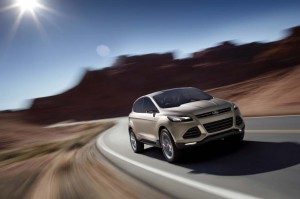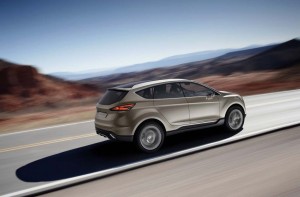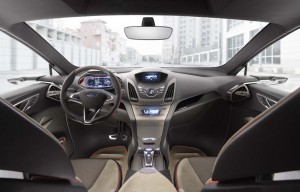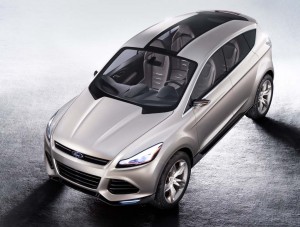
"A hint of what's to come," much of what you see in the Ford Vertek concept vehicle will reappear in the next-generation Ford Escape.
While you won’t see the new Ford Vertek concept vehicle roll into your local showroom anytime soon, it’s more than the typical fantasy-in-chrome show car.
The prototype, making its debut at the Detroit Auto Show, this morning, is “a not so subtle hint at where we’re headed,” suggests Ford’s global design chief J Mays.
And what that means is that a significant number of styling cues from this SUV prototype will reappear on the next-generation Ford Escape due to launch later this year.
 The Vertek underscores the changing nature of the compact SUV market. When Ford first launched its Escape, just over a decade ago, buyers wanted vehicles that maintained traditionally boxy ute styling. Today, competitors like the Toyota RAV4 have been adopting a more rounded, “cute-ute” design language.
The Vertek underscores the changing nature of the compact SUV market. When Ford first launched its Escape, just over a decade ago, buyers wanted vehicles that maintained traditionally boxy ute styling. Today, competitors like the Toyota RAV4 have been adopting a more rounded, “cute-ute” design language.
Ford wants to plant Vertek somewhere in the middle. The new concept vehicle is “decidedly unboxy in terms of a (classic) SUV,” stresses Mays, but it’s designed to convey a bit more solidity and capability, nonetheless, than the current crop of “soft-roaders.”
The Ford Vertek concept is also meant to expand the appeal of the compact crossover/ute. The segment might have launched in the States, but it is booming in Europe, where demand has increased 200% over the last decade for products like the Ford Kuga. And in China, demand is expected to jump 60% from 2009 through 2011.
Ford’s Vertek is the latest example of the maker’s so-called “kinetic design language,” and a sign that the maker is migrating the styling themes from passenger cars to light trucks and crossovers. The concept is designed to express both fluid motion and muscularity, according to Mays.
Signature cues include a hood designed to express a feeling of power, as does the large lower trapezoid grille. The roof features a full-length glass panel; that particular touch is unlikely to make it into production on the next Ford Escape.
The interior design focuses on what Mays describes as a “blade-like center console.” Significantly upgraded from the current, utilitarian Escape cabin, the Vertek features accented sport seats and a mix of high-line chromes and leathers.
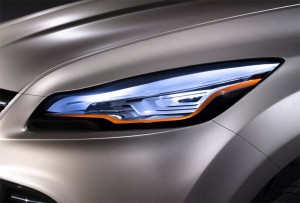
It remains to be seen how many of the design cues from the Vertek concept will carry over onto the next-generation Ford Escape.
The Vertek underscores the One Ford strategy, which has the maker abandoning its old policy of developing separate products for each major market. Going forward, Kuga and Escape will share the same platform and most of their underlying components – though it has not been decided whether the two nameplates will survive or if Ford will also adopt a single model name for worldwide use.
“We’re wrestling with that,” confides Mays.
The Ford Vertek design is about 5% more aerodynamic than the existing Ford Escape, the maker claims. Notably, towing capacity will remain the same.
The concept is powered by a 1.6-liter, inline-four-cylinder version of the Ford EcoBoost engine, which should deliver a mix of both power and fuel-efficiency when it reappears in the new Escape.
Significantly, the production car will get the same Stop/Start technology introduced in the Ford Vertek concept. The system automatically shuts off the engine when idling at, say, a stoplight, instantly restarting as the driver’s foot lifts off the brake pedal. Estimated to reduce fuel consumption by as much as 10%, Ford promises to offer Stop/Start on as much as 20% of its global line-up by 2014.
(For more on Ford’s Stop/Start technology, Click Here.)
Another fuel-saving system on the concept helps recapture kinetic energy to keep the battery recharged.
Ford recently made the radical switch from a truck-based to car-like platform for its flagship SUV, the Explorer. There were plenty of people worried about making such a “radical departure,” Mays concedes, on both Explorer and the next Ford Escape. But he insists company insiders are “very happy” with the move, and the response to the Vertek show car should reveal whether potential customers agree.

